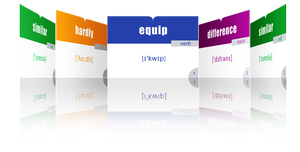SCIENCE-MINOR BODIES OF THE SOLAR SYSTEM
- Подробности
- 501
Minor bodies of the Solar System include asteroids (main belt, Trojans), comets (from the Kuiper Belt and distant Oort Cloud), and small meteoroids that can become meteors and meteorites. There are also trans-Neptunian objects and Centaurs that orbit among the giant planets. These icy and rocky remnants preserve clues to how planets formed.
MINOR BODIES OF THE SOLAR SYSTEM

Minor bodies of the Solar System include dwarf planets, asteroids, comets, and countless small meteoroids. They inhabit belts and clouds from the inner system to the deep outer reaches and preserve clues to how the planets formed.
Asteroids are mostly rocky or metallic. Most reside in the main belt between Mars and Jupiter; others are Near-Earth Objects (NEOs) that cross or approach Earth’s orbit, and Trojans that share orbits with planets near the L4 and L5 Lagrange points (famously around Jupiter, but also Neptune and even Earth). Icy–rocky Centaurs roam between Jupiter and Neptune, often as transitional objects from the outer reservoirs.
Comets are icy bodies that develop a glowing coma and tails when heated by the Sun. Short-period comets (period < 200 years) mainly come from the Kuiper Belt and Scattered Disk (roughly 30–50 AU from the Sun). Long-period comets are thought to originate in the distant Oort Cloud, a spherical reservoir extending perhaps from ~2,000 to ~100,000 AU.
Dwarf planets are large minor bodies massive enough to be nearly round but not dominant in their orbits. Recognized examples include Pluto, Eris, Haumea, and Makemake in the outer system, and Ceres in the main belt. Many have moons, thin atmospheres, or unusual shapes and rotations (e.g., Haumea).
Meteoroids are small fragments of rock or metal; when they enter Earth’s atmosphere they produce meteors (“shooting stars”), and surviving pieces that reach the ground are meteorites. Monitoring of NEOs identifies Potentially Hazardous Asteroids (PHAs) that come relatively close to Earth and are large enough to pose risks, guiding planetary defense strategies.
Exploration has transformed our view of minor bodies: Dawn orbited Vesta and Ceres; Rosetta/Philae studied comet 67P; New Horizons flew past Pluto and a Kuiper Belt object; sample-return missions Hayabusa, Hayabusa2, and OSIRIS-REx brought pieces of asteroids to Earth; and DART demonstrated kinetic impact deflection on the moonlet Dimorphos. These worlds are time capsules, preserving the ingredients and processes from the Solar System’s birth.
LISTEN TO THE TEXT





 Как правильно изучать английский язык по карточкам (статьи)
Как правильно изучать английский язык по карточкам (статьи)